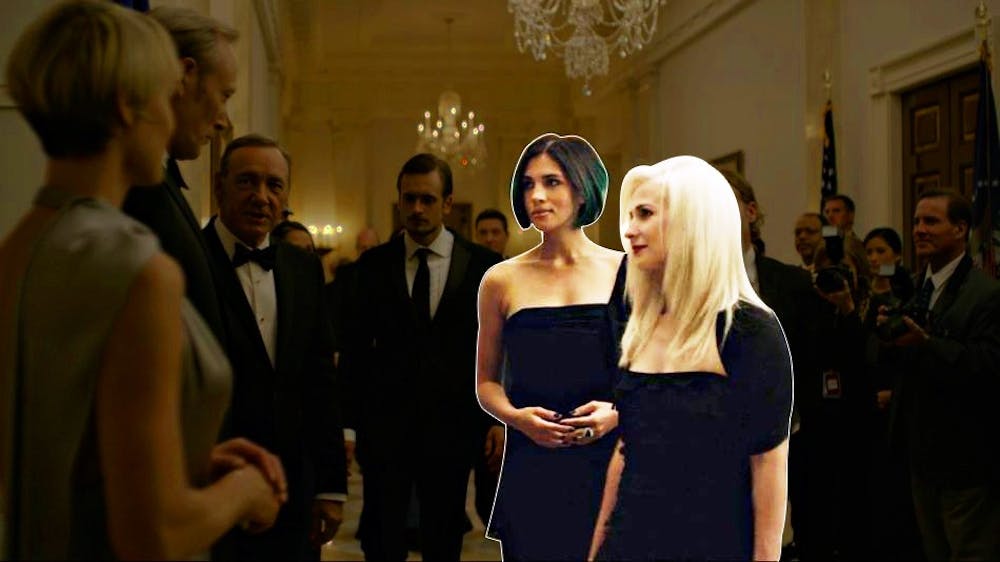The anticipation was palpable as an auditorium filled with Penn students of all ages and majors waited for the arrival of Maria Alyokhina and Nadezhda Tolokonnikova, founding members of the Russian punk group, Pussy Riot. After all, these were the same two women who had been arrested, wrongfully imprisoned and eventually released after twenty–one months of brutal incarceration conditions. And yet, here they were, at the Penn Museum, smiling, chatting with one another in Russian and answering questions.
Since their life–changing performance at a Muscovite cathedral in 2012, Pussy Riot has not only intrigued Russian politicians, but also global human rights activists and foreign governments. Their efforts to change the political and artistic landscape in their home country has spread across the globe. After all, they were projecting their newest music video, "I Can't Breathe", here on campus—half a world away from home.
Shot in Russia, the video depicts Russian symbols. (In it, you'll notice the pair’s uniforms and the pack of cigarettes that's reminiscent of the Russian Spring). But the ballad’s lyrics, written over the course of one night in New York, refer to the time both artists spent protesting the death of Eric Garner in the city. The difference between the recently released song and older Pussy Riot tracks and videos is not only aesthetic, but also thematic. “I Can’t Breathe” takes a step away from punk—it's slow, bleak, less chaotic. Most importantly, it pushes the viewer to take a global stance on issues that are not only Putin–related.
Both members often compare the current situation in Russia to that of other countries, specifically the US. “Political violence exists, at least to some extent, in both nations," Alyokhina says.
This video, in many ways, emerges as a response to a “blank space”—the concept that certain law institutions separate themselves from the media, believing “they cannot be touched," Alyokhina continues.
As I sat across from Alyokhina and Tolokonnikova, they discussed why and how young people, especially young women, can get involved in politics. Alyokhina mentioned the gap between opportunities within student groups and protests at Russian and American schools. “In Russia, you have to go to a very privileged, expensive school to access what is so natural to America. And this should be used to fight for any issues that are important to you,” she noted.
And while this may come as a surprise, the American tradition of feminist rights often inspired the twenty–six year old. She explained: “You might feel this to be very natural if you’re inside the US, but if you’re eighteen and in Russia, you look at all these things that supposedly exist in the US, and it all looks very romantic, powerful, influential.”
When she asked me my thoughts on her answer, I paused. With so much farther to go in the pursuit of equal rights, can a twenty–first century US really be an appropriate role model? And yet, here were two cultural icons pointing at campuses like Penn and urging students to take advantage of our groups, debate forums and vibrant student voices.
Ultimately Alyokhina and Tolokonnikova left us with a lot more than a simple commentary about human rights and the entanglement of art and politics. Just as they are multi-faceted artists and activists, they reminded us about our own potential to create and debate. Addressing our audience specifically, they compared our time today to the '60s and '70s—generations of “something." We leave with an urgency, to never be part of a generation of “nothing” and to always strive to send a message of value.







